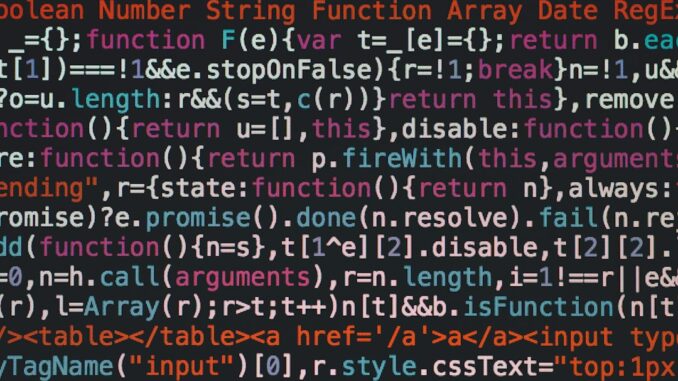
Summary
This article explores the concerning trend of code and tactic sharing amongst ransomware gangs, exemplified by groups like HellCat and Morpheus. The implications of this interconnectedness are analyzed, including its facilitation of RaaS operations and the potential for increased attack frequency and sophistication. This shift in the ransomware landscape poses significant challenges for cybersecurity professionals and businesses alike.
Explore the data solution with built-in protection against ransomware TrueNAS.
Main Story
Okay, so, you’ve probably heard about the evolving ransomware scene – it’s getting pretty wild out there. Instead of operating in isolation, these ransomware gangs? They’re increasingly working together, sharing code, tactics, and even infrastructure. Think of it like a hydra; you chop one head off, and two more spring up. It’s a serious threat for businesses globally, and honestly, it’s a game-changer.
This isn’t just a bit of friendly collaboration, it’s a whole new model. For instance, take HellCat and Morpheus, two ransomware gangs that security researchers recently identified. Turns out, their payloads have almost identical code, which strongly suggests they’re using shared infrastructure. This isn’t an isolated incident; there’s growing evidence of overlap between various ransomware groups and their affiliates. This means quicker development and deployment of ransomware, making it easy for new groups to appear. Furthermore, it’s becoming harder to track who’s doing what. The lines are seriously blurred.
And that’s not all, the rise of Ransomware-as-a-Service (RaaS) platforms plays a significant role in this. RaaS provides ready-made tools and infrastructure, which enables even less skilled individuals to launch sophisticated attacks. The shared code between HellCat, Morpheus, and others suggests RaaS is a big driver for this interconnectedness. For example, the Underground Team, a RaaS operation, has been linked to both HellCat and Morpheus – solidifying this connection. It’s like buying a franchise, but instead of burgers, it’s malware.
Now, some of this is because law enforcement has been successful in disrupting major RaaS groups like LockBit. When these groups are dismantled, their affiliates seek opportunities elsewhere, bringing their know-how with them. It’s like a cross-pollination of tactics, spreading throughout the ransomware ecosystem. As a result, this has led to a more competitive market, with affiliates constantly moving between different RaaS operators. It’s a bit like the wild west out there, really.
This all has big implications for cybersecurity pros. Traditional tracking methods may no longer work because it’s become hard to distinguish between different groups. Also the quick spread of tactics through shared code makes it difficult to keep up with evolving threats, and quite frankly, it’s exhausting. I’ve spent whole nights trying to trace attacks, only to hit dead ends. You might have experienced the same, right?
Consider HellCat, which is known for targeting big fish like the telecom giant Telefónica, and Morpheus, which is a more covert operation. They demonstrate the range of players operating within this network. Their use of shared code highlights just how efficient and adaptable this new model of ransomware distribution is. On the one hand you have these large scale, blatant attacks, and on the other hand it’s more covert, stealth like activity.
Looking forward, this trend is likely to continue. Law enforcement pressure will probably lead to more fragmentation and more collaboration. This means things will become even more complex for cybersecurity folks, requiring new threat intelligence, detection, and response approaches. It’s like learning a new language every other week; it’s tough but necessary.
Honestly, the rise of these interconnected ransomware gangs represents a fundamental change in the cybercrime world. Understanding this interconnectedness is crucial for developing effective strategies against this growing threat. By recognizing the shared code, tactics, and infrastructure, organizations can better prepare themselves, and mitigate their risk. It’s a daunting task, I’ll admit, but staying informed is your best bet. What do you think, have you seen similar trends in your experience?


The interconnectedness of ransomware groups via RaaS is a concerning trend, it suggests a more efficient and rapid spread of sophisticated attacks, demanding more dynamic threat response approaches from cybersecurity professionals.
Absolutely, the efficiency you mention is a key concern. The speed at which these attacks evolve due to shared tactics forces cybersecurity professionals to adopt more proactive and adaptable strategies. It also highlights the need for continuous monitoring and a collaborative approach to defense across organizations.
Editor: StorageTech.News
Thank you to our Sponsor Esdebe – https://esdebe.com
The article’s point on RaaS significantly lowering the barrier to entry for cybercriminals is crucial. It suggests a future where even less sophisticated actors can launch complex attacks, which poses a greater challenge for threat prediction and mitigation strategies.
You’ve hit on a critical aspect. The accessibility RaaS provides definitely changes the game. It’s not just about sophisticated actors anymore, this means we need to rethink the kind of attacks we’re preparing for. It highlights a future with a much broader range of potential attackers.
Editor: StorageTech.News
Thank you to our Sponsor Esdebe – https://esdebe.com
The mention of law enforcement pressure causing fragmentation is interesting. Does this suggest that disruptions, while necessary, might inadvertently contribute to a more complex and harder-to-track threat landscape?
That’s a really insightful point about law enforcement pressure. It’s almost a paradox; by disrupting these groups, we may be creating a more intricate and challenging environment to navigate, which certainly warrants more discussion around the implications of these actions and how to best approach future interventions.
Editor: StorageTech.News
Thank you to our Sponsor Esdebe – https://esdebe.com
So, it’s a ransomware “franchise” model now? Do they offer a loyalty program? Perhaps with discounts on bulk data exfiltration or a “Buy one get one free” decryption key offer?
Ha! That’s a humorous take on the RaaS model. It certainly feels like a twisted franchise, doesn’t it? Your comment highlights the structured approach these groups are now taking, which makes them more effective and organised. It’s almost like they’ve taken tips from the world of business, just not in a good way!
Editor: StorageTech.News
Thank you to our Sponsor Esdebe – https://esdebe.com